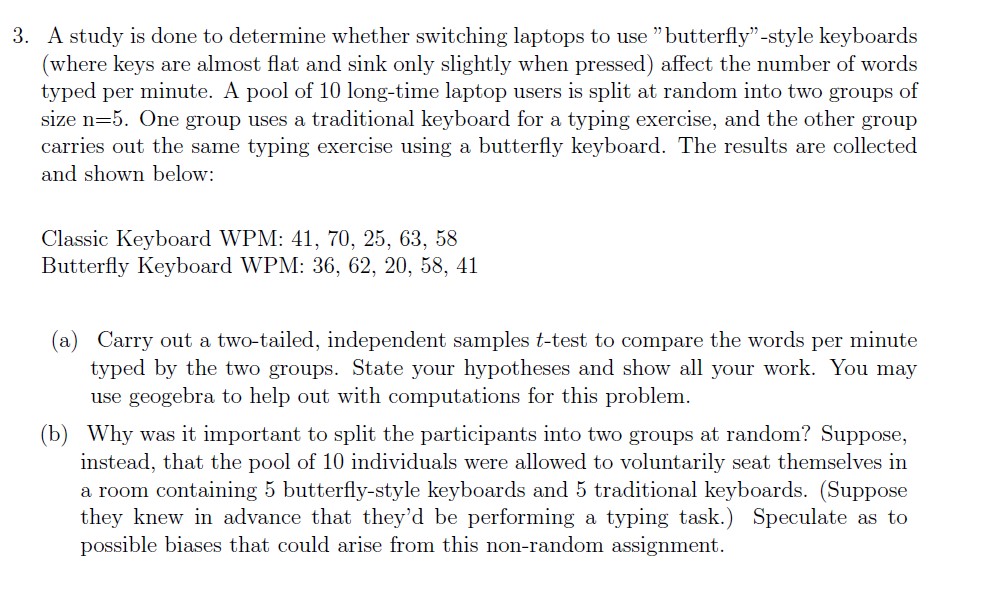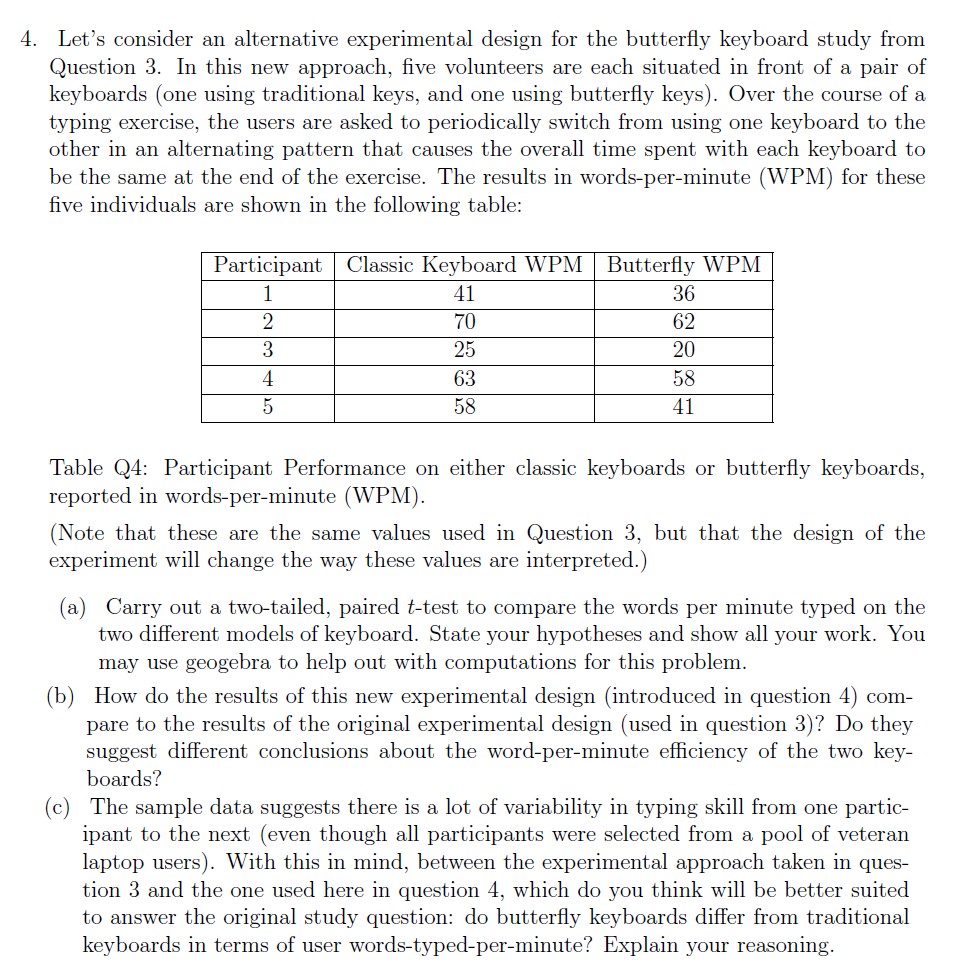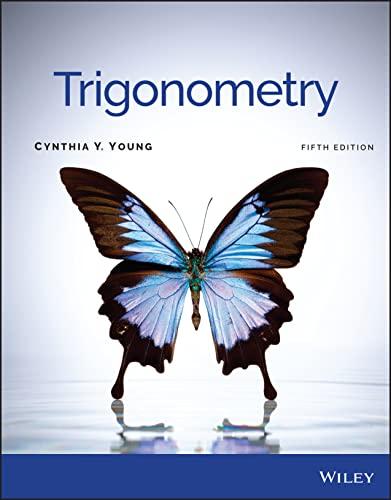I only need help with question 4:
3. A study is done to determine whether switching laptops to use \"buttery\"style keyboards (where keys are almost at and sink only slightly when pressed) affect the number of words typed per minute. A pool of 10 longtime laptop users is split at random into two groups of size n25. One group uses a traditional keyboard for a typing exercise, and the other group carries out the same typing exercise using a buttery keyboard. The results are collected and shown below: Classic Keyboard WM: 41, 70, 25, 63, 58 Buttery Keyboard WPM: 36, 62, 20, 58, 41 (a) Carry out a twotailed, independent samples ttest to compare the words per minute typed by the two groups. State your hypotheses and show all your work. You may use geogebra to help out with computations for this problem. (b) Why was it important to split the participants into two groups at random? Suppose, instead, that the pool of 10' individuals were allowed to voluntarily seat themselves in a. room containing 5 buttery+style keyboards and 5 traditional keyboards. (Suppose they knew in advance that they'd be performing a typing task.) Speculate as to possible biases that could arise from this non+random assignment. 4. Let's consider an alternative experimental design for the buttery keyboard study from Question 3. In this new approach, ve volunteers are each situated in front of a pair of keyboards (one using traditional keys, and one using buttery keys]. Over the course of a typing exercise, the users are asked to periodically switch from using one keyboard to the other in an alternating pattern that causes the overall time spent with each keyboard to be the same at the end of the exercise. The results in wordsperaminute (WPM) for these ve individuals are shown in the following table: Participant Classic Keyboard WPM Buttery WPM 1 41 36 2 70 62 3 25 20 4 63 58 5 58 41 Table Q4: Participant Performance on either classic keyboards or buttery keyboards, reported in wordsperminute (WPM). (Note that these are the same values used in Question 3, but that the design of the experiment will change the way these values are interpreted.) (a) Carry out a twqtailed, paired tstest to compare the words per minute typed on the two di'erent models of keyboard. State your hypotheses and show all your work. You may use geogebra to help out with computations for this problem. (b) How do the results of this new experimental design (introduced in question 4) come pare to the results of the original experimental design [used in question 3]? Do they suggest dierent conclusions about the wordperminute eiciency of the two key- boards? (c) The sample data suggests there is a lot of variability in typing skill from one partiC+ ipant to the next (even though all participants were selected from a pool of veteran laptop users). With this in mind, between the experimental approach taken in quess tion 3 and the one used here in question 4, which do you think will be better suited to answer the original study question: do buttery keyboards dier from traditional keyboards in terms of user wordsstypedsperuminute? Explain your reasoning








